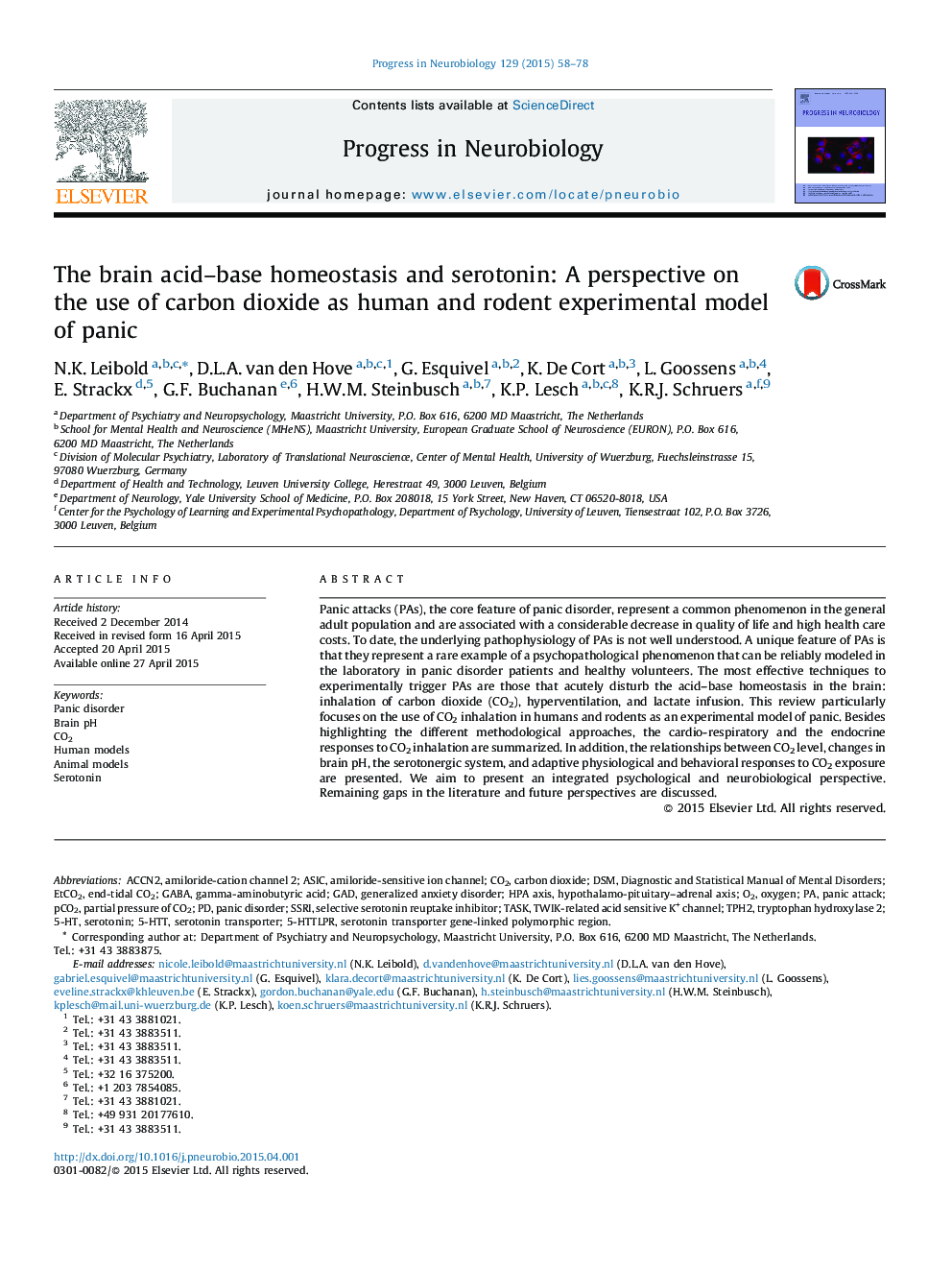| Article ID | Journal | Published Year | Pages | File Type |
|---|---|---|---|---|
| 4353292 | Progress in Neurobiology | 2015 | 21 Pages |
•CO2 inhalation is a well-validated human experimental model for panic attacks.•The serotonergic system has an important role in chemosensitivity and panic disorder.•The brainstem may be one of the key brain structures involved in panic disorder.•In panic research, rodent studies and translational approaches are still scarce.•Cross-species research can strongly improve translation between humans and rodents.
Panic attacks (PAs), the core feature of panic disorder, represent a common phenomenon in the general adult population and are associated with a considerable decrease in quality of life and high health care costs. To date, the underlying pathophysiology of PAs is not well understood. A unique feature of PAs is that they represent a rare example of a psychopathological phenomenon that can be reliably modeled in the laboratory in panic disorder patients and healthy volunteers. The most effective techniques to experimentally trigger PAs are those that acutely disturb the acid–base homeostasis in the brain: inhalation of carbon dioxide (CO2), hyperventilation, and lactate infusion. This review particularly focuses on the use of CO2 inhalation in humans and rodents as an experimental model of panic. Besides highlighting the different methodological approaches, the cardio-respiratory and the endocrine responses to CO2 inhalation are summarized. In addition, the relationships between CO2 level, changes in brain pH, the serotonergic system, and adaptive physiological and behavioral responses to CO2 exposure are presented. We aim to present an integrated psychological and neurobiological perspective. Remaining gaps in the literature and future perspectives are discussed.
